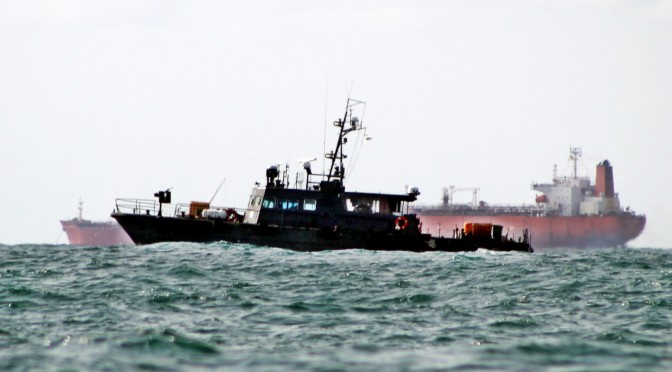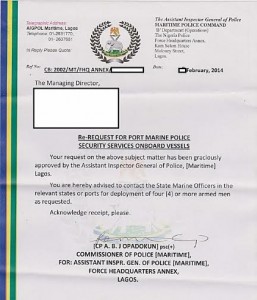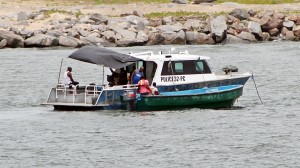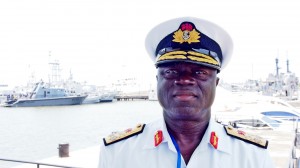Jason Chuma in his post Law from Power raised certain interesting questions relating to power and the enforcement of international law. Chuma draws a parallel between the domestic/municipal and international systems of law arguing that sanctions are the only way to counter violations. Chuma concludes saying that owing to the lack of such a mechanism in international law it is redundant. His Austinian definition of the law considers international law to be a set of rules backed by the threat of sanctions. As Chuma puts it “Claims without the ability to enforce are rhetoric, nothing more”.
Chuma’s definition of law (an Oxford dictionary version) may appeal to us given the domestic law we interact with in our everyday lives. Indeed it would be hard to conceptualize domestic law as law at all if it did not have a certain ‘coercive’ element to it, but it is here that a problem arises. Chuma’s poor opinion of international law flows from his drawing an analogy between the international and national systems of law. This analogy is incorrect simply because legal authority is vertical in domestic societies and horizontal in the international order. In the domestic/vertical system there exists a clear hierarchy wherein the law is at a superior pedestal and its subjects the citizens are at a lower one. Obedience to the law is demanded and can be ensured by the use of organized violence upon which a state has a monopoly within its territorial boundaries.
Sovereign states who are the primary subjects of international law are co-equal by contrast and subordinate to no one. There is no central authority and no hierarchy in a system whose subjects themselves make the law which is why international law works on the principles of reciprocity and consensus. It is evident then that the operation of the law as most individuals are familiar with within a nation is not how the law will operate in between states internationally. What Jason has done is confuse the question of whether international law is law with the problem of the effectiveness of international law.
The idea that law is necessary for a stable existence free of chaos and anarchy may have been in dispute at the beginning of the 20th century but not today. Two devastating world wars and the recognition that there are problems which can’t be dealt with only nationally (communications, international trade, environment and refugees) have put to rest that dispute. Given increasing global interdependence and rapidly proliferating non state actors the role played by international law in providing stability and predictability becomes all the more vital.
It is true that international law can’t solve every problem. For instance situations where the very survival of a nation is at stake international law may indeed take a backseat. The truth is that violations of the law are just as rare in the international realm as they are in the domestic one. There has always however been little incentive to focus on how international law is largely complied with everyday. This is understandable given how ‘mundane’ matters which form the bulk of the business of international law lack the ‘sexiness’ inherent in issues involving great political questions. Hence issues ‘brought’ to the fore front are the rare breaches such as those involving national security or a nation’s independence. Such matters where rational decision making is often overwhelmed by passions and pride are the instances when international law is apt to be violated. Another factor that contributes to skepticism about international law is scale. In a domestic system the subjects of law number in the millions whereas internationally the number of states does not even exceed the 200. In such a scenario violations of international law are bound to be known immediately while some thousands of deaths occurring in a domestic system fade in a background that is vast enough to absorb such numbers. The violation of laws domestically is not however hailed as a failure of the system despite the fact that the state holds a supposed monopoly on violence. For no matter how good the laws are or how efficient enforcement is some measure of non compliance will always occur. Given how the international legal order does not have a world parliament, a world executive or a monopoly of force but yet it continues to influence state actions speaks volumes about its resilience and real existence.
Notwithstanding the structurally different nature of international law vis a vis domestic law, international law could not have staked a claim to being law if it was not adhered to by states as a matter of obligation. It is because states adhere to international law as a matter of obligation that it is different from international comity or international morality. Whilst the UNSC can theoretically act as a global executive which can sanction nations for violations of international law this rarely happens in practice owing to the need for such decisions to be unanimous. The lack of a unified system of sanctions however simply means that states resort to self help. The high end of the spectrum of actions encompassing self help includes the qualified exercise of armed force in select circumstances. It is the rare occasion though when states have to take that path. In most circumstances the element of reciprocity is a powerful means of ensuring compliance with international law since violations may bring short term gains but only at the cost of long term disadvantages. The failure to ensure diplomatic immunity for example would place the diplomats of the violating country at risk everywhere. Similarly seizing commercial possessions of foreign nationals unlawfully would not only invite similar counteraction but would also damage the prospects of foreign business coming to the nation in the future. States are more or less permanent entities which is why in the long run a nation benefits more from cooperative behaviour rather than confrontational behaviour. Hence the inducement for reasonable behaviour which is facilitated by the existence of a common vocabulary that international law provides.
Jason has focused on the role played by power in letting a nation do as it wishes and (as he says) avoiding the penalties for violation of the law (a contentious assertion as these penalties needn’t be material but can be loss of international standing the physical quantification of which is very tough). The more interesting theme Jason has missed is the role played by power in enabling the formulation of international law to suit the interests of major powers. A juxtaposition of law with power is flawed to the extent that the law is projected as being concerned solely with authority and not power. Law exists where there is an interlocking of authority with power. The idea that international law sustains the international political order is not unique to the early brand of Marxist international law. Marxists conceived international law as being just one of the many devices used by the ruling classes to further their ends. Even outside the Marxists it is widely accepted that law cannot exist in a vacuum. This is the reason why international law cannot simply be divorced from its socio-political origins which always influence it.
For it to be considered that international law just ‘exists’ out ‘there’ waiting to be objectively applied is quite farcical. Viewing international law as strictly rules is not incorrect but what is incorrect is to presume that rules are what international law exclusively and predominantly consists of. International law is not just authoritative decisions (rules) rather it is the whole decision making process by which rules are made. If this were not the case then international law could never adapt to a world with continually changing political conditions. Accepting that international law is not merely applied but rather that the framing of it involves making choices between claims with varying degrees of legal merit opens a Pandora’s Box. This is so since such a visualization of international law creates scope for the argument that international law is made in furtherance of extralegal ends.
For international law to have such a quality may well be perceived as a negative aspect by some. It could be attacked as a feature that allows states to engage in actions as they see fit using international law in an apologist manner that covers up for their deeds. Consider also however the positives. The United Nations Security Council (UNSC) with its 5 permanent members is a frozen reflection of the international order as it existed at the conclusion of the Second World War. A failure of international law to reflect today’s changed dynamics is what can lead to rising powers refusing to abide by an order that isn’t flexible enough to accommodate them. When this happens the historical tendency for resolution of such a problem has been war. Contemporarily, China’s rapid rise has raised questions about whether the existing international legal order will prevail in the form it exists. How China chooses to continue to engage or not with the international legal regime may well determine the shape it assumes in the future. But for now the fact that no nation has till date opted to withdraw from the United Nations or substantially reject the principles of public international law is evidence that international law no matter how inefficiently it may be working, is working.
Himanil Raina is a B.A LL.B (Hons.) student at the NALSAR University of Law and a freelance writer on geopolitical and international affairs. He can be contacted at [email protected].








 Dean Cheng joins us to discuss China. Like a flourless brownie, this podcast is dense and delicious. We hit China’s goals and perspectives: From the Chinese “status quo”, to the South China Sea, to India, to the use of crises as policy tools. If you want to see behind the headlines, this is your podcast.
Dean Cheng joins us to discuss China. Like a flourless brownie, this podcast is dense and delicious. We hit China’s goals and perspectives: From the Chinese “status quo”, to the South China Sea, to India, to the use of crises as policy tools. If you want to see behind the headlines, this is your podcast.